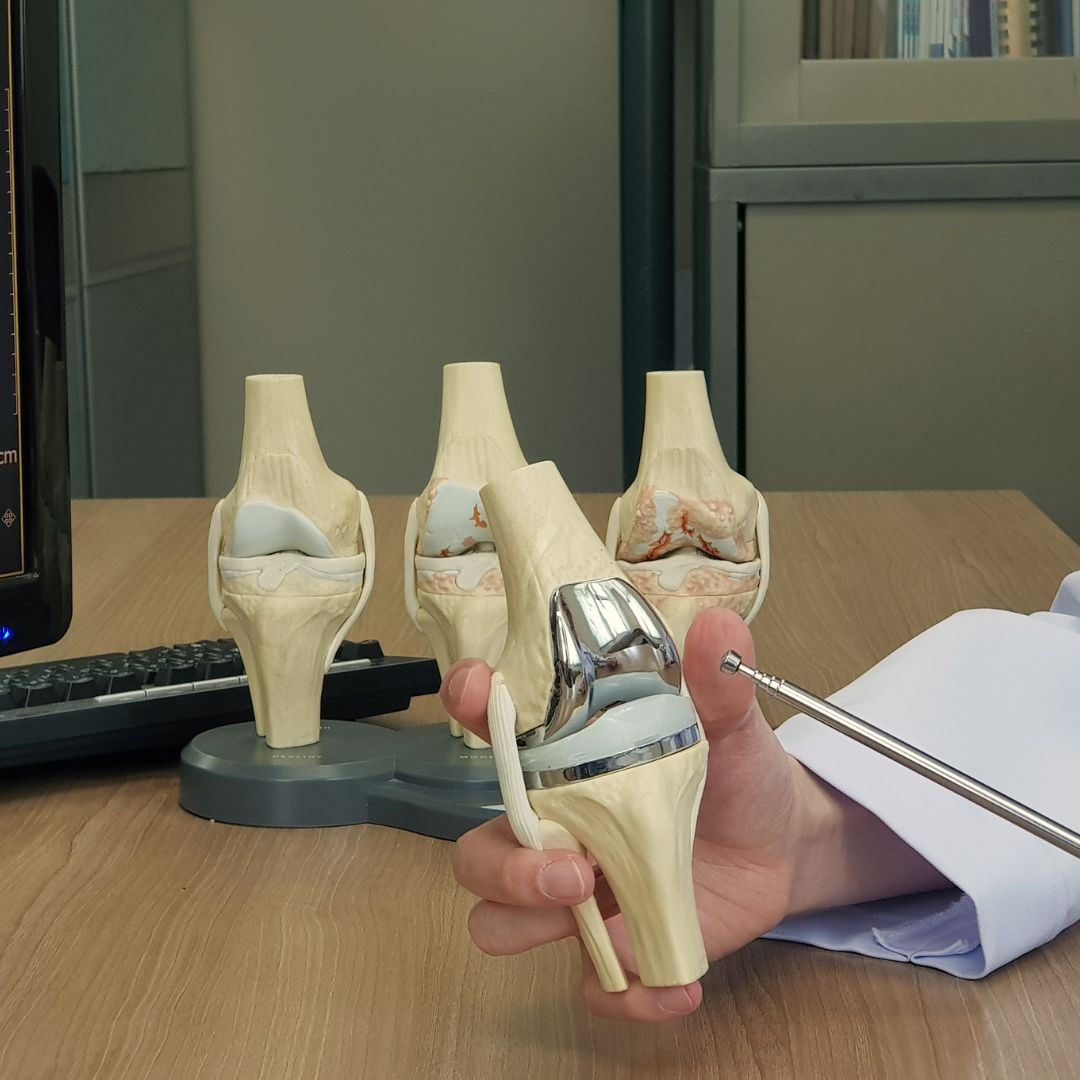Knee arthritis is becoming increasingly common, especially in the younger age group. There are many reasons for that, some of which are
- Increasing level of activity in young adults
- Increasing RTA (road traffic accidents)
- Increasing popularity of sports and therefore related trauma
- Greater incidence of cartilage and ligament injuries of the knee
The arthritis usually starts in one of the compartments of the knee. Once the arthritis of the knee starts, it gradually progresses and the symptoms get increasingly more severe. The symptoms include knee pain and swelling, warmth, stiffness, loss of movement, knee locking and giving way. Initially, non-surgical treatment may be tried in the form of
- Analgesia
- Anti-inflammatory medications (NSAIDs)
- Physiotherapy
- Weight reduction
- Injections of
- Steroids
- HA (hyaluronic acid)
- PRP (platelet rich plasma)
- ARTHROSAMID
The arthritis is very commonly confined to only one part of the knee. When the symptoms cannot be managed conservatively, surgery could be considered, of which knee replacement is an important part. If the knee arthritis is limited to only one part of the joint, partial knee replacement (uni-compartmental knee replacement) should be considered.
ADVANTAGES:
A partial knee replacement (uni-compartmental knee replacement) requires removing less bone than in a total knee replacement. Less ligament also needs to be resected. As a consequence, there is less bleeding and the patient experiences less pain than after a total knee replacement. A partial knee replacement (uni-compartmental knee replacement) is also safer than a total knee replacement, as there are fewer complications. The recovery is quicker due to less tissue disruption, and patients are able to mobilise earlier with less support. The range of movement achieved is usually greater than after a total knee replacement. Very importantly, the feeling of the knee is much more natural after partial knee replacement. Patients may even forget that they have had knee replacement surgery. The survival of a partial knee replacement (uni-compartmental knee replacement) is very similar to that of total knee replacement, however in a very small number of cases arthritis may affect the parts of the knee that were not replaced, and treatment may be required for that.
SUMMARY:
The advantages of a partial knee replacement (uni-compartmental knee replacement/UKR) over a total knee replacement are-
- Less bone resection
- Less ligament disruption
- Less pain
- Less blood loss
- Quicker recovery
- Earlier mobility
- Fewer complications
- Greater range of motion
- More natural feel of the knee
- Higher chance of patients forgetting that they have had knee replacement (forgotten knee)
- Happier patients

